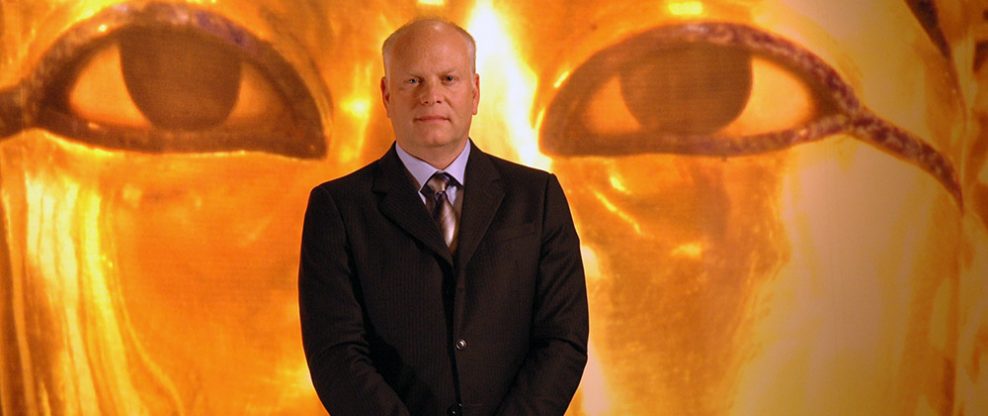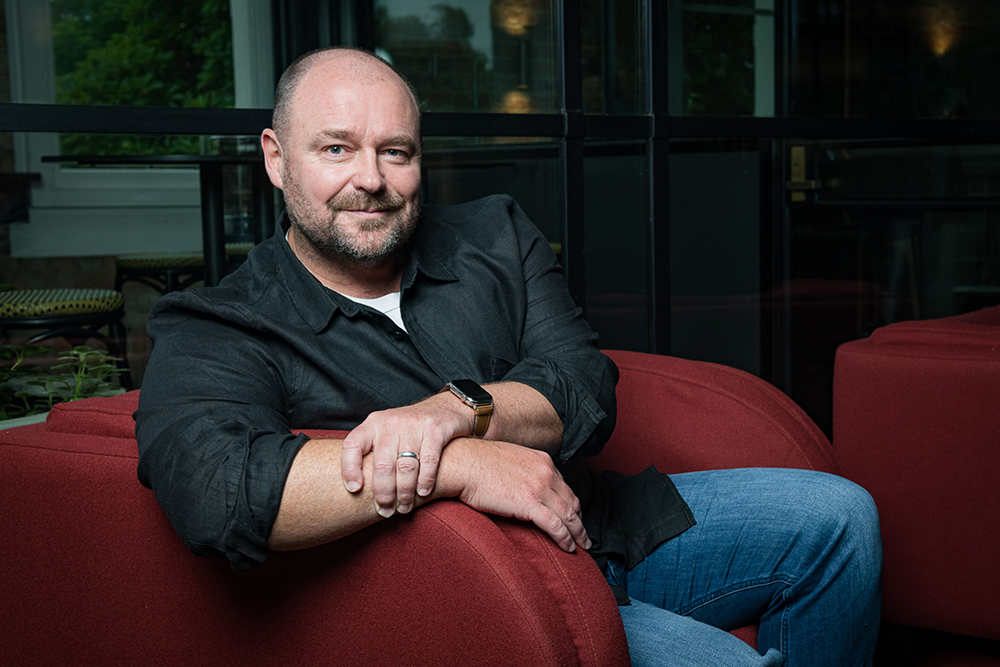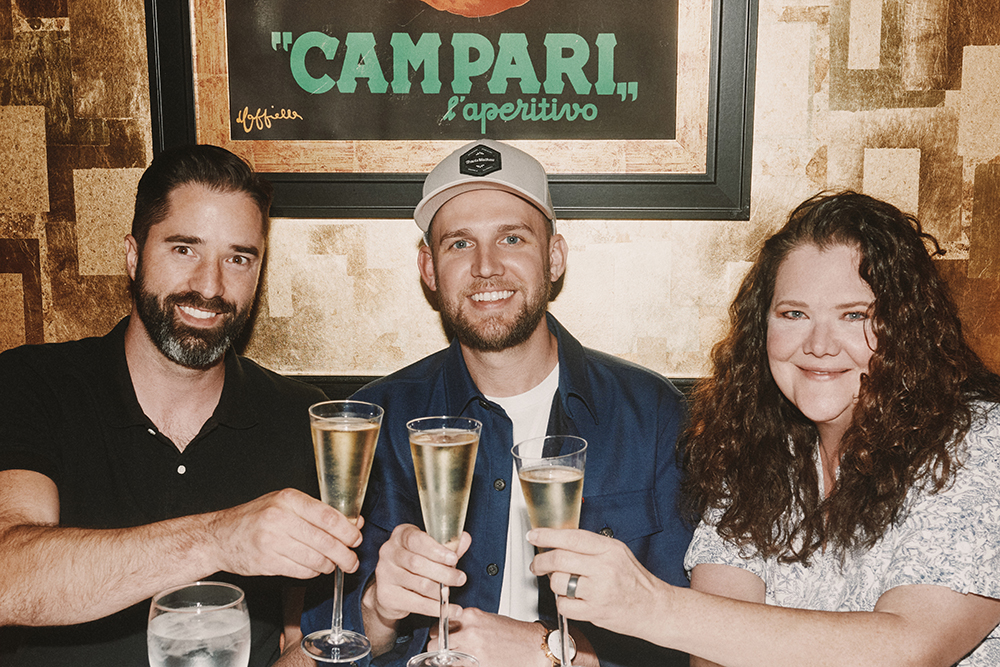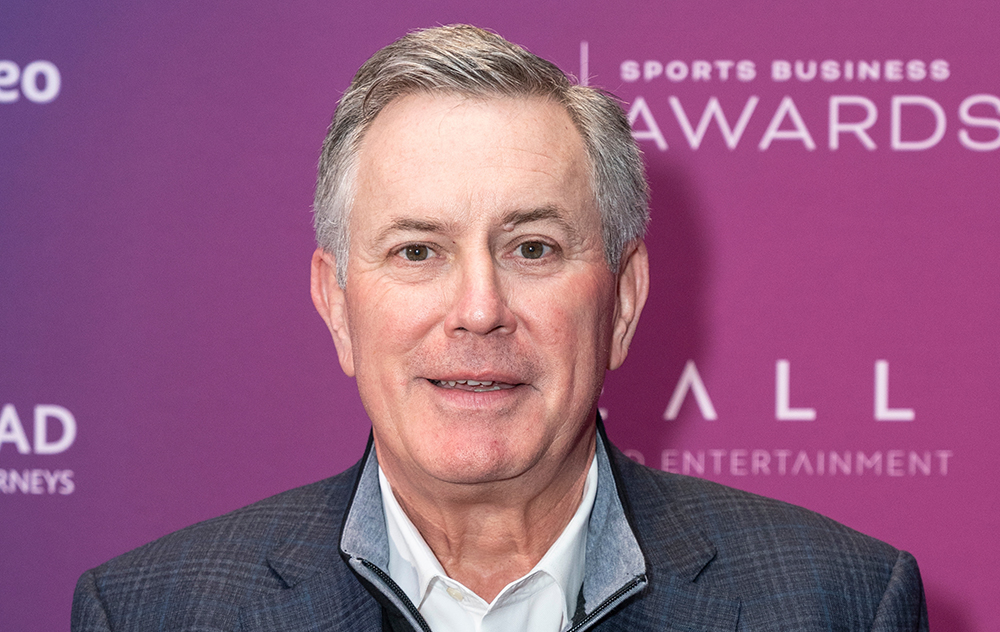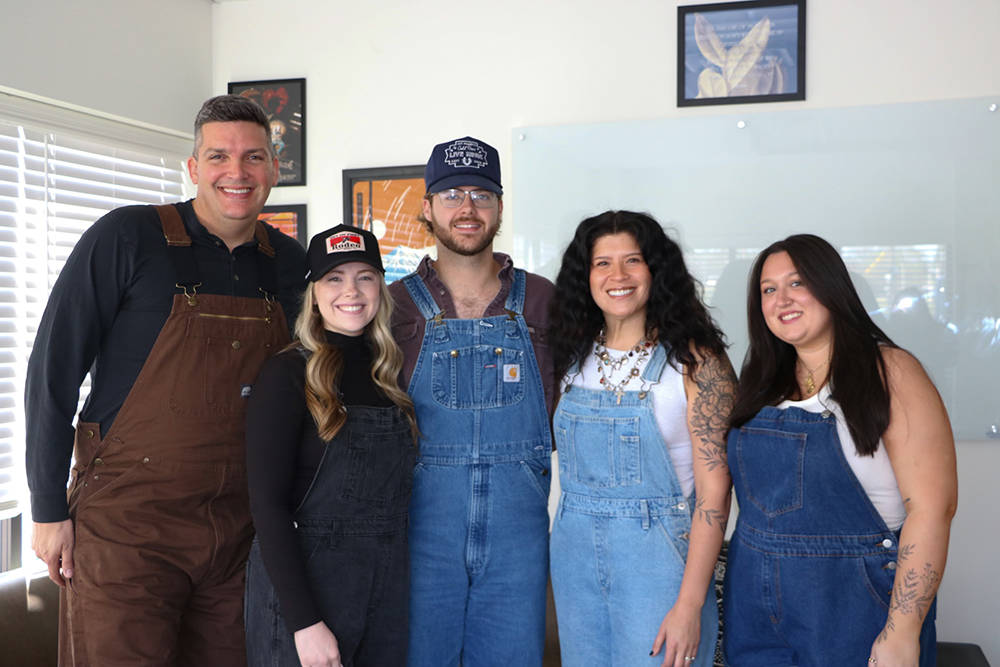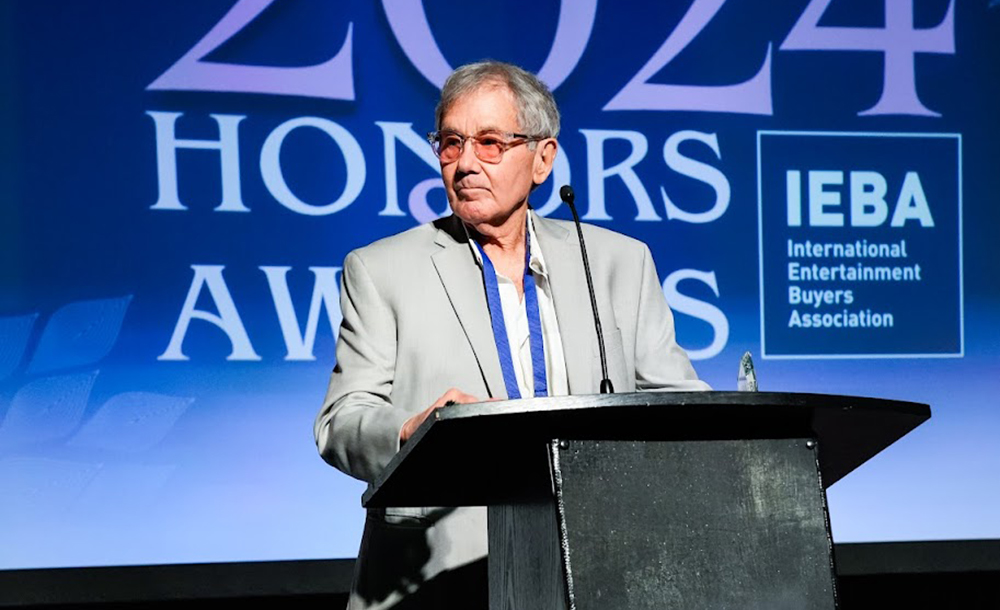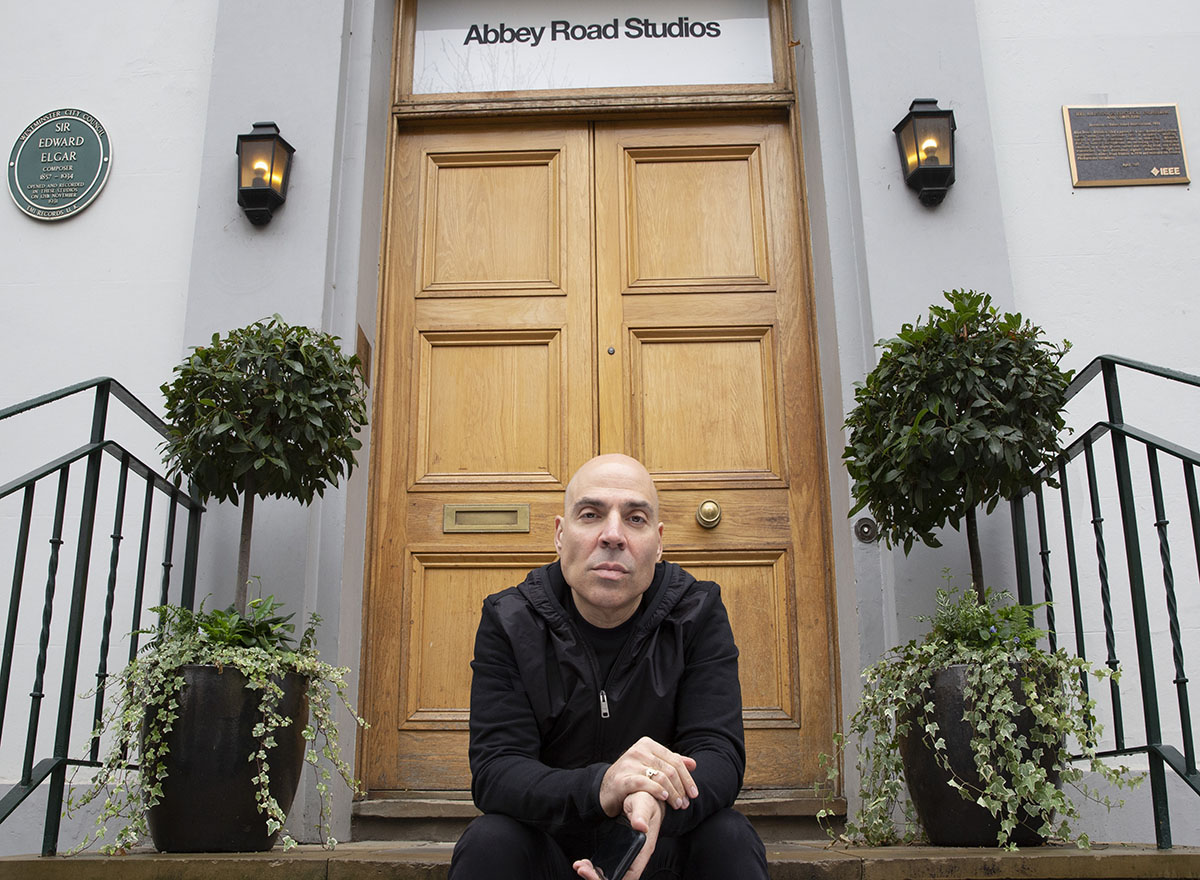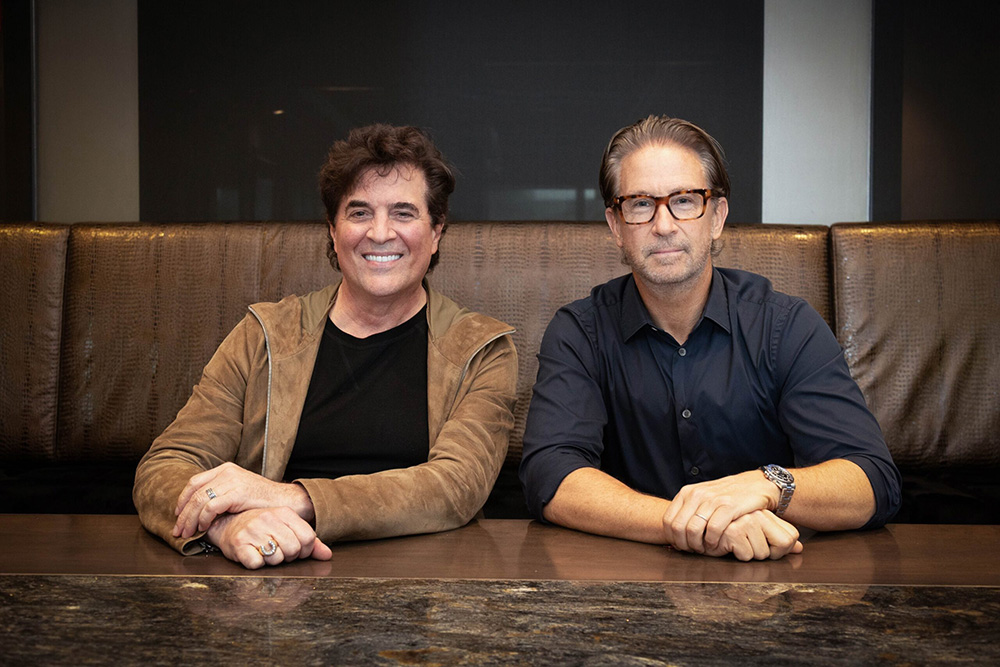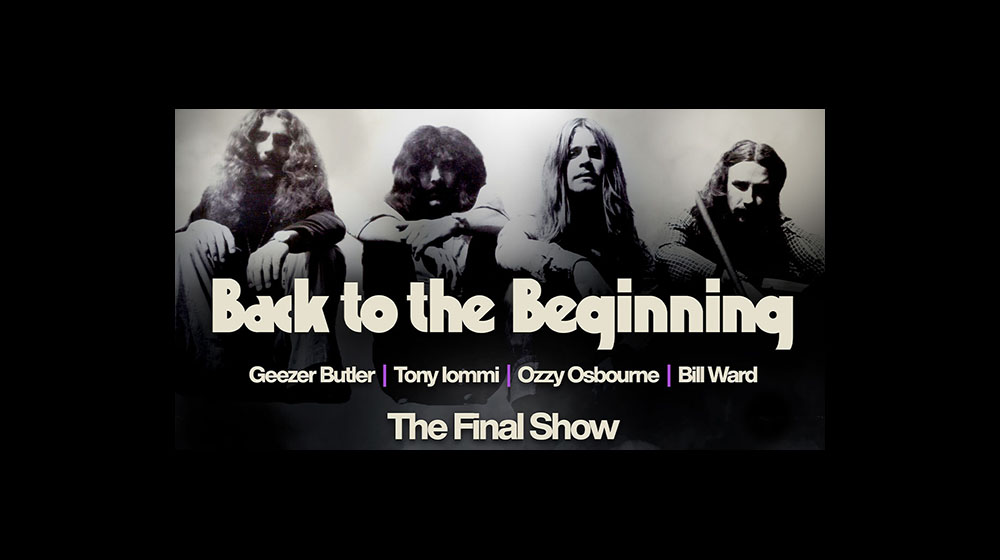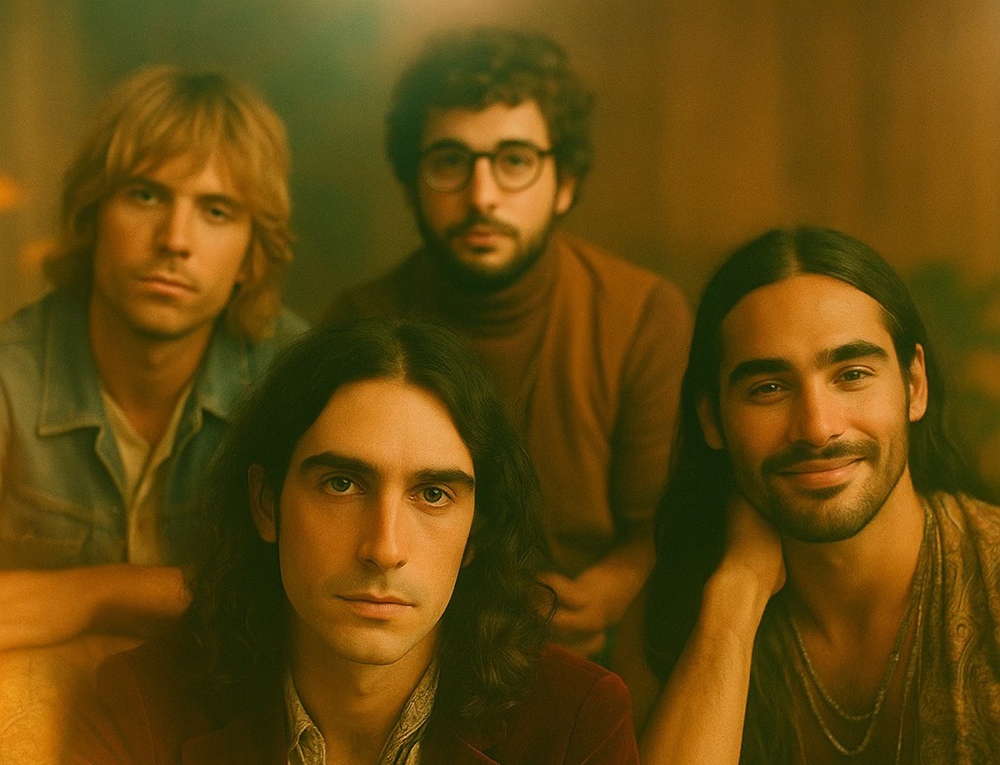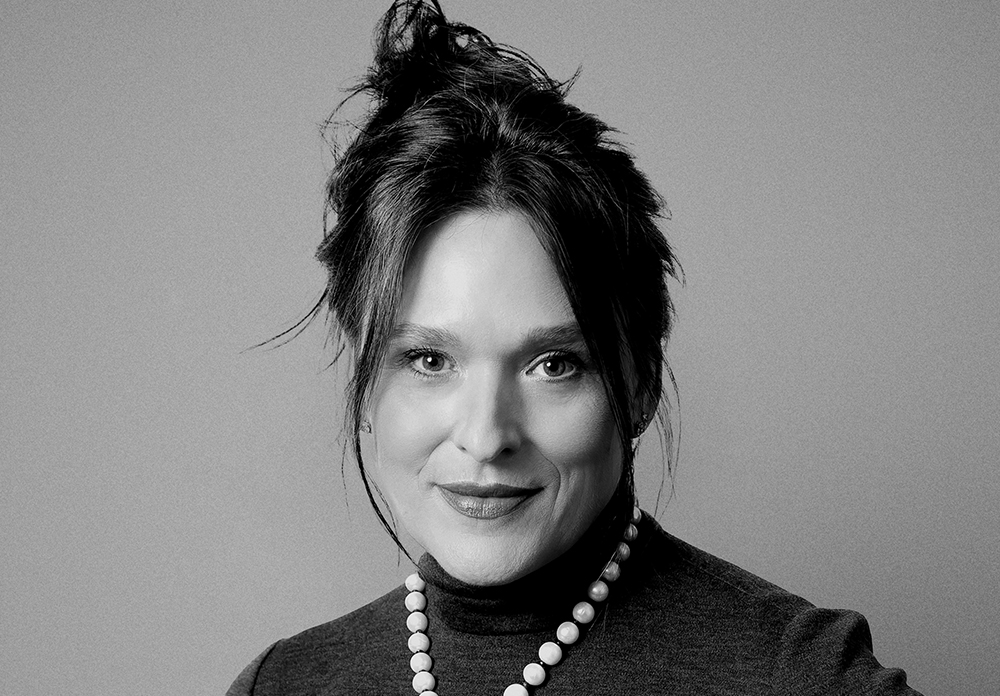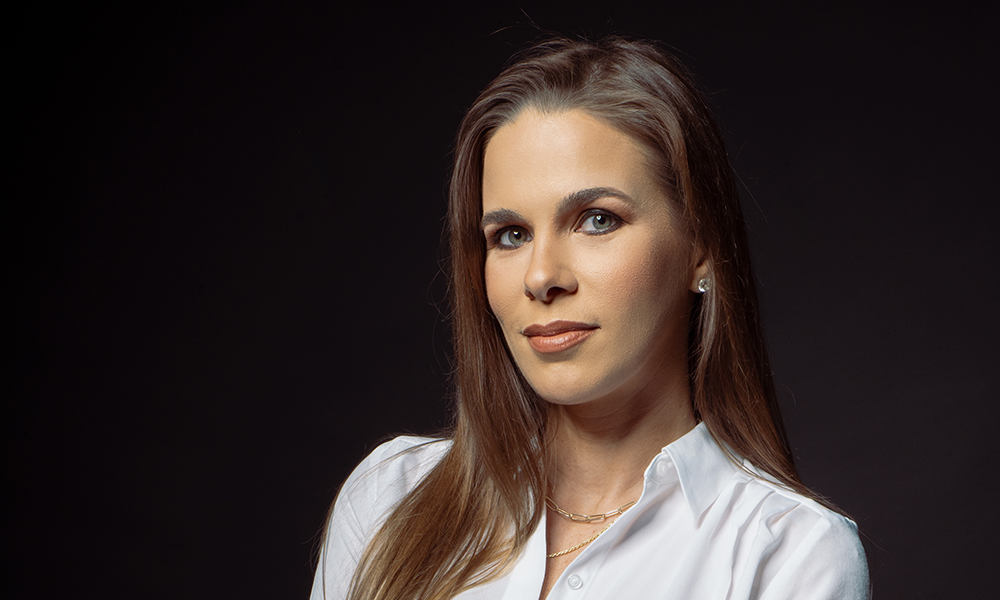This week In the Hot Seat with Larry LeBlanc: John Norman, Managing Director, IMG Exhibitions.
For nearly three decades, John Norman has been sharing iconic and priceless treasures with the public by mounting some of the most popular museum and fine art traveling exhibitions of our time.
This includes producing multiple exhibitions of Tutankhamun (“Tutankhamen and the Golden Age of the Pharaohs,” and “Tutankhamun: Treasures of the Golden Pharaoh”); and Titanic (Titanic: The Artifact Exhibition,” and “Titanic The Experience”).
As well as “Cleopatra: The Exhibition,” “Diana: A Celebration,” “Saint Peter and the Vatican: The Legacy of the Popes,” “Pompeii: The Exhibition,” “Cleopatra: The Search for the Last Queen of Egypt,” “Real Pirates,” “AMERICA I AM,” “BODIES: The Exhibition,” “BODIES REVEALED,” and “Dialog in the Dark.”
Precise blockbuster event experiences with detailed attention paid to engagement, educational and entertainment sensibilities.
In 2013, Bizbash, the leading trade media for the event industry named Norman, as one of the top 50 most innovative people in event production.
During the ‘90s, Norman worked for Magicworks Entertainment, overseeing its touring shows, including “The Magic of David Copperfield,” “Jesus Christ Superstar,” and “West Side Story,” and tours of Fleetwood Mac, Janet Jackson, Styx, and Pat Benetar.
Norman then went on to serve as senior VP of SFX Entertainment, and co-president and COO of Clear Channel Exhibitions before coming to IMG in 2018. Norman today works with his team from Fort Myers, Florida.
Under Norman’s direction via IMG and the Egypt’s Ministry of Antiquities, “Tutankhamun: Treasures of the Golden Pharaoh”—the “mummy” of all King Tut shows which is touring through to May 3, 2020–celebrates the November 1st, 1922 discovery of the tomb by British archaeologist and Egyptologist Howard Carter and Lord Carnarvon, after excavating the Valley of Kings there.
It is the only Ancient Egyptian royal tomb ever found intact.
The touring exhibition houses more than 150 original artifacts from the golden pharaoh’s tomb, 66 of which are out of Egypt for the first, and the last time before they return for permanent display in the Grand Egyptian Museum which will open in 2020.
“Tutankhamun: Treasures of the Golden Pharaoh” closed in Paris on Sept 22nd, 2019 with 1,423,170 visitors over 6 months since it was opened by Egypt’s Minister of Antiquities Khaled Anany on March 23, 2019, at the Grand Hall de la Villette, breaking a turn-out record in the history of cultural exhibitions in France.
The official opening ceremony in London of “Tutankhamun: Treasures of the Golden Pharaoh” at the Saatchi Gallery on Nov. 2nd, 2019 was attended by Egyptologists, academics, government officials, public figures, and foreign ambassadors.
No doubt beaming with delight that night was an enormously proud John Norman.
“Tutankhamun: Treasures of the Golden Pharaoh” opened November 2nd at the Saatchi Gallery in London for a 6-month run, its 3rd stop following Los Angeles and Paris. In 2005 you toured “Tutankhamen and the Golden Age of the Pharaohs,” a traveling exhibition that earned $110 million for Egypt during its tour of seven cities in Europe, and the United States. You later organized a second King Tut exhibition of 17 cities from 2005 to 2011.
How did “Tutankhamun: Treasures of the Golden Pharaoh” finally come about after such a long period of Egyptian inactivity with the artifacts?
I got a phone call in 2017 from (Egyptian archaeologist, and former Minister of State for Antiquities Affairs) Zahi Hawass who was my original contact in Egypt. He said, “John, Egypt is in bad shape. I was talking to the new Minister of Culture, and they made so much money on the last tour that they’d be interested in doing an anniversary tour” which is the 100th anniversary. So I flew over and met with the new guard. I said, I said, “If you are going to allow me to do this tour….”—and they said, “John, there’s only one person in the world that we trust with our national treasures”—and I felt very proud and honored by that—“We know that you took such care of them. We had no issues. Everything was transparent and fair.” And I said, “Well I would love to do it, but this time we have to make it so special that nobody can compare it to the previous tour that we did in 2005. Instead of 50 objects like you gave us in 2005, we need 150 objects.” And I said, “I want to be the one that chooses the 150 objects, certainly with your approval, of course. The other thing is this has to be a 10 city tour. Not just U.S. centric. It has to be a world tour.”
Many of the objects have never been out of Egypt. Previously, the Egyptians only let out you have about 60% of the artifacts on hand.
Yes. It’s true that 66 of them had never been out. This will be the last time the objects ever leave the country because they are going to return to the Grand Egyptian Museum they are building which will be the final resting place for these objects.
(“Please see them, visit them, before they return back to Egypt forever,” said a recent statement from Mostafa Waziry, secretary-general of the Egyptian Ministry of State for Antiquities.)
Over the years there’s been multiple King Tut exhibits dating back to 1967. Do you think this will be the last time these objects will be out of Egypt?
Yeah. I really do.
You were with Anschutz Entertainment Group (AEG) when you had overseen “Tutankhamen and the Golden Age of the Pharaohs.” How did you come to involve IMG, a sports, fashion, and entertainment media company, further in the mega-exhibit business? It acquired your company Exhibitions International year leading to you and your team joining IMG.
So I leave Egypt in 2017 with an agreement in principle to do a 10 city world tour with Egypt with 150 objects as the Centennial Exhibition. Now I’m going to have to figure out how I’m going to pay for it. So I called Stephen Flint Wood at IMG (the managing director of arts & entertainment events there) in London. Back on our previous first tour we went to Melbourne, Australia and we had partnered with IMG because AEG did not have a real footprint in Australia. So at the time we did a deal with Stephen to bring King Tut there in 2011. I asked Stephen if IMG would be interested, and since he had the experience from the success we had in Australia. it was very easy for him to understand the business model and all of the weird things that you’ve got to do an exhibition like this.
Is everything shown authentic or are replicas used?
Not one replica. There are a few replica King Tut exhibitions out touring. I won’t associate with them. Even when I went back, and started my own company again, I wouldn’t. I’ve always, always, in my exhibitions, used the real objects.
To ship the $1 billion worth of jewelry, statues, furniture, and other treasures–some 31,000 pounds—from Cairo, Egypt to the California Science Center in Los Angeles for the first date of “Tutankhamun: Treasures of the Golden Pharaoh,” sponsoring FedEx supplied a Boeing 777 with gadgets that monitor humidity, temperature and light exposure.
Yeah, the Triple 7 they gave us. It (FedEx) is one of the IMG relationships.
The Boeing 777 was staffed with round-the-clock security, including an Egyptian representative. A fleet of trucks, similarly guarded and equipped, delivered the artifacts. The first King Tut tour in 2005 nobody wanted to ship these delicate and challenging parcels.
None of the major carriers were interested in offering that.
After designing and organizing the second King Tut exhibition which toured 17 cities from 2005 to 2011, you had thought that was the end of that part of your life?
In 2011, I thought that was the end of me working with King Tut, the Egyptians and so on. It was in 2011 when they (the Egyptians) had the uprising or The Arab Spring (also known as the January 25 Revolution). Zahi Hawass was no longer in power in the government, and the Minister of Culture was gone. Everybody I had worked with was no longer there. The objects went back to Cairo, and that was the end of it. I thought that chapter of my life was done. It was a very successful chapter, of course, but it was sad to see that go. Also at that point with AEG, Phil (Anschutz) was trying to sell his business.
Right when that started happening, and we had finished the Egyptian relationship, I still had other exhibitions that were touring like “Pompeii: The Exhibition,” things that were not generating the kind of revenues that King Tut would.
(In the fall of 2012 billionaire Philip Anschutz announced plans to sell Anschutz Entertainment Group, owner of Los Angeles’ Staples Center and concert promoter AEG Live. Blackstone Advisory Partners was brought in to assist with the sale. However, Anschutz took the company off the market in March 2013, and he expressed plans to become more actively engaged in its day-to-day operation. Executives inside the company were taken by surprise by the abrupt move which also led to the departure of Tim Leiweke, president/CEO of Anschutz Entertainment Group (AEG)
You had sold your then company Arts & Exhibitions International to AEG in 2007?
In 2007, rather than just being a joint venture partner with AEG, Phil really liked the exhibition business, and said, “I just don’t want to partner with you. I want to build this business together.” I said, “Okay, then buy me out of our agreement and we will build the company together.” So in 2007 they acquired Arts & Exhibition which was my company, and I became head of AEG Exhibitions and we went on to-do probably 7 or 8 different exhibitions along with King Tut including the Vatican exhibit.
AEG wanted to divest of the internal companies that didn’t support its core business. So in 2012, Premier Exhibitions acquired your company Arts & Exhibitions International (AEI)
An opportunity came where Premier Exhibitions was approaching me directly and saying, “We need somebody to develop new exhibitions for us.” They were only doing The Titanic and The Bodies exhibits. I said “I’d love to come and develop new product for you, but I think the only way that is going to happen is if you acquire the division (AEG Exhibitions) from AEG. It was one of those timing things that worked out great, where they (AEG executives) said, “Sure, we want to streamline the company. Phil wants to sell it.”
So Premier did a deal with AEG to acquire the content that we were touring and my team. So for three years I worked for Premier and ended up leaving in 2015. I left on unfavorable terms. I didn’t have the capital to grow the company and therefore I wasn’t any help. So they let me out of my contract, and I was also able to take the Pompeii exhibition with me.
How did you first get involved with Tutankhamun and the Egyptians that led to touring “Tutankhamen and the Golden Age of the Pharaohs?”
In 2003, I had just done the Princess Di deal and had opened it in Toronto, and I heard from Andy Numhauser who had worked for me at Clear Channel. He was from Santiago, Chile, and he was in charge of the international markets for me in touring. When I left Clear Channel, he also left Clear Channel. It was our goal to work together on other projects. He called me up, and he said that he’d heard that the Egyptians had just approved sending King Tut artifacts out of the country again, and it (“Tutankhamen: The Golden Hereafter”) was opening in Switzerland (from April to Sept. 2004 at Basel’s Museum of Ancient Art).
It was the first time in 20 years that a Tutankhamun exhibition had been on display in Europe.
The guy in control of the artifacts was Dr. Zahi Hawass. I said, “Okay that’s great, and it’s opening in two weeks in Switzerland, but how in the world are we going to get to this Zahi Hawass?” Andy is friends with Omar Sharif, the Egyptian actor. He had worked with Omar about 10 years earlier in Miami on a project, and he had kept in touch with him. He said, “Let me call Omar.”
(The long-reigning patron of Egyptian antiquities, and an effective hands-on manager who is known to cut through bureaucracy Zahi Hawass is a renowned showman/scholar. He has written best-selling books, and the National Geographic Society named him explorer-in-residence in 2001. Hawass has more recently finished the script for “Tutankhamun Opera” with a score by Zamboni, set to debut at the opening ceremony of the Grand Egyptian Museum in late 2020. Hawass recently stated that DNA testing will reveal information about the death of Tutankhamun and that in 2020 he will announce how the golden king died.)
At that point, the last time the King Tut artifacts were allowed out of Egypt was at the beginning of the ‘80s when they were last toured.
We had known that if you are in the exhibition business that the biggest exhibit of all time is the one that coined the term “blockbuster” which was King Tut.
So Andy picked up the phone and finds Omar who I think was in Paris, and says, “You are Egyptian, do you know Zahi Hawass?” Omar says, “Yes, Zahi is one of my best friends.” So Omar calls Zahi who then calls Andy. Andy says, “I just got done talking to Omar, and we’d like to talk to you about bringing King Tut back to America after it’s done in Switzerland. Zahi invites us to come over and have dinner with him in Basel, Switzerland. So Andy and I fly to Basel, and sure enough they are opening this exhibition there. We have dinner with Zahi. A very quick dinner, indeed. Zahi says, “I guess if Omar is vouching for you guys, then you must be the real deal. If you want to bring it (the King Tut exhibit) to America you are going to have to pay the loan fee, and I want you to work with National Geographic (Society). Go back to the United States, and give (the executive VP and Chief Science and Exploration Officer) Terry Garcia a call at the National Geographic Society, and get back to me.”
You then worked with the National Geographic Society as well as with AEG, right?
Correct. Knowing that I had essentially the idea to do four cities in America, and the going rate was $5 million a city…..
Plus the costs of shipping, insurance, and other things. So it wasn’t just the $5 million exhibit fee
No. We had to build an exhibit, design an exhibit, find museums, and deal with the insurance, marketing. All of those things. So I knew that I needed to go and find money to do that. What I did was that I relied upon my previous life as a concert promoter and called John Meglen who was running AEG’s concert division. We had done Fleetwood Mac together, and I think Janet (Jackson) as well because it was a Magicworks and Pace Concerts partnership. So I said, “John, I just got this opportunity that I think I can get King Tut to come back to the United States. Do you think that Phil (Anschutz) would be interested?” Two days passed, and John called back, “Phil wants you to come out to the opening of Celine (Dion) at Caesar’s (Celine Dion’s “A New Day” premiered at the 4,000-seat Colosseum at Caesars Palace in Las Vegas on March 25, 2003). So I go out to Vegas, and I met Phil, Tim Leiweke and John, all of the (AEG) big boys, and I presented a business case for us to produce the exhibit, and take it to four cities,
The initial plan was for “The Golden Age of the Pharaoh” to be presented in Los Angeles, Chicago, Fort Lauderdale, and Philadelphia.
I don’t know if the four cities were all identified at that point. It was just four major (American) markets. Phil, if he wants to do something, he’s going to do it. Nobody really knew anything about museum exhibitions. But Phil is an art lover. He’s got his art collection. I have to say he got it right away and said, “Absolutely. Let’s do this. Get with my guys, do all the paperwork, and let’s do a joint venture, and let’s do the tour.” So I went back to Egypt and told Zahi that we had the money. We had the support of National Geographic and Terry Garcia, and we believe we can open it at the Los Angeles County Museum of Art (the largest art museum in the western United States) the following year in June. I probably took 10 trips to Egypt over time.
Then London, San Francisco, Dallas, New York, and Melbourne were added.
The fours shows started in 2005, and then during the second show in Fort Lauderdale, we went to Egypt. Phil’s agenda at that time was opening the 02 (in London) and one of the very brilliant things that Tim Leiweke and Phil did was to think, “Boy, we are opening up this O2. We are going to have concerts there, but we could sell it (King Tut) to the market there at the O2.”
When AEG agreed to take on the much-pilloried Millennium Dome in 2005, people were doubtful. AEG had, however, spotted a gap in the U.K. market. London was crying out for a large scale, state-of-the-art music venue. AEG had the foresight to see the opportunities that the Millennium Dome (renamed O2) offered. At the time the complex was lying empty and was viewed with great disdain.
They hadn’t even started building ground yet. I remember being there when there were guys flying battery airplanes inside there. The idea was that they would build us a 30,000 square foot exhibition space solely for doing King Tut at the O2. It had to be that we scheduled it to open right when the O2 would open. What that would do was that it would create footfall (footsteps)—as they call it over there—to the building. So all of the restaurants, the movie theatres and everything else would have people there all day long, and then at night time, the concerts would satisfy the bars and everything else.
So you had the four U.S. cities under your belt and here was London coming on board.
Egypt was very happy because we had just done 936,000 people in L.A. and we had done 700,000 people in Florida, a million people in Chicago at the Field Museum. We said, “in addition to London why don’t we extend it for another three cities, and after that we can come back to America and do three more cities?”I said, “Just like Titanic where we had more than one Titanic show—we had two traveling in America; one traveling in Europe; one in South America. So why don’t we apply the same case here? There are thousands of King Tut artifacts that were recovered from the tomb so why don’t we approach Egypt and say, ‘Let’s do a second King Tut tour,’ and then we can go to 6 to 8 other cities at the same time as the first tour is going on? Since we control the routing, we can make sure that we don’t bump into each other, and we can generate a bigger business by doing it that way.”
Critics and museums have long complained that the Tutankhamun exhibitions were part of a trend that contributed to the commercialization of museums. There were concerns that museums were giving up their traditional role as curators by agreeing to accept such commercially-backed, prepackaged big-name exhibitions like King Tut. Still, anyone spending $30 to visit an exhibit wants a bang for their buck, including those showing using all that is available today in entertainment displays.
The expectations of a visitor have changed even over the past 5 years. I think you are accurate. With the competition for the public’s hard-earned dollars, you have to show more than you did 10 or 15 years ago. You have to not only engage and educate, but you want to entertain.
For decades many museums were quite boring. Here you come in waking up this ultra-conservative world by utilizing music, films, and cinematic lighting to create a tantalizing atmosphere.
Absolutely.
Meanwhile, with many museums back then, you’d return to them 5 years later, and you’d find little had changed. Despite the technical advancements in theatre, music and other cultural fields, museums remained quite conventional.
Absolutely. And I didn’t have any dealings or history within the museum world, and I wasn’t even a museum-goer at that time, and because I was so focused on entertainment, when it came time to say, “Let’s start producing Titanic, and let’s tour it for four or five years,” even though we were doing six months in a city instead of just one night like regular concert tour, we were still responsible to taking it to each museum. Museums, at that point, were not used to working with an outside producer. They would typically have internal curators, and internal designers produce their exhibitions.
As well, they would also get exhibitions virtually intact from other museums, and would practically copy what had been done earlier in their marketing and content display.
Correct. So I came in and said, “Well, instead of doing things the typical way,” which is putting things in a case, and putting a label and a white light above it, “why not use theatrical lighting, and create environments so these objects can be telling a story in a different way than they have been done before? Even let’s incorporate music into it.” That was something that nobody had done before.
Well, the environment of a museum was expected to be akin to a library.
Yes. “How dare you?” Absolutely
Music has, in fact, been an important component of your exhibitions.
Yeah, in 2005 when we opened the first King Tut exhibition at the Los Angeles Country Museum of Art, the director walked in a couple of days before the opening as we had just turned on the music. I had worked with a composer, and we had composed different music tracks for each gallery to enhance the visitor experience. It was just background music. David Mauk, who was in the band Champion with me before I was part of Magicworks, composed all of this music. It (the exhibit) wasn’t silent because I felt that the music also added to the visitor experience. The director came in, and she said, “Why are you playing music?” I told her we had composed it for the exhibition. She said, “You can’t do that. You can’t play music in an art museum. It is supposed to be completely quiet, so you can take in the beauty with your eyes.” I was like, “You’ve got to be kidding.” Then she said, “We have final approval on what happens in our museum, and I refuse to allow you to play the music.” That was so disappointing.
(Norman was the guitar player, and producer of Champion’s album, “Halfway to Heaven,” released by Quicksilver Records in 1987.)
So you had to pull the music out from the King Tut showing at the Los Angeles Country Museum of Art?
I had to. It got into legal and pulling out the contract stuff. So that was the first city on the tour. After that, I put music back into the exhibit. So now when you saw the rest of the first tour that music was there. All my exhibits now have music. Titanic has music. Princess Diana had its own music score. Music just enhances the visitor experience. Now it’s not such a no-no to be in a traveling exhibition that has music. But in 2005, they certainly didn’t want to hear about it.
You got into the exhibition space while a tour producer, and promoter for Magicworks Entertainment, and Clear Channel Entertainment. You were promoting tours for top-name artists including Janet Jackson, Fleetwood Mac, Styx, and Pat Benetar, and touring productions of “The Magic of David Copperfield,” “Jesus Christ Superstar,” and “West Side Story.”
Your direct introduction to the exhibit world came from seeing an exhibit of the ill-fated ship RMS Titanic?
That is exactly what it was. Joe Marsh, one of the owners of Magicworks (with Lee Marshall), had heard from a friend that there was The Titanic exhibit down in St Petersburg, Florida. It was a year after the movie “Titanic” came out, and was a big hit (grossing $2.187 billion). It was the Memorial Day weekend in ’98.
You learned that 830,000 people over six months had viewed the exhibit.
I saw a line of people queuing up at the Florida International Museum. I saw a line of people out the door, down the street, and turned around the corner. I was like, “What the heck is this?” I knew somebody who knew somebody and they got me into the exhibit without having to wait in line and saw these artifacts.
(Since a bitterly cold evening April 14th & 15th, 1912, the RMS Titanic has rested on the bottom of the North Atlantic, a watery grave for more than 1,500 people. Since 1987, a private American company has salvaged remains of Titanic from the ocean floor, amassing more than 5,500 artifacts from the ill-fated liner.)
About 250 or so artifacts were displayed in a conventional exhibit manner with text panels and object labels.
The company RMS Titanic owned all of the artifacts. They had done several dives to Titanic and had brought up quite a few artifacts. They are beautiful. Everything from jewelry to a pair of shoes to plates and things that were on the ship, to a porthole, and physical pieces that were on the bridge and so on. There was a very diverse set of artifacts, but what intrigued me was the fact that there were so many people queuing up waiting to pay $20. The exhibition had been there for 6 months, and it was the closing weekend. Everybody was trying to get in, and it was causing all of this excitement.
I thought, “Wow. This is sort of like what we are doing with our shows, except instead of one night in one arena and tearing down and moving, here you are setting up a show, eventually they called it an exhibition, and you’ve got these artifacts that are in cases and they don’t complain about the catering or they don’t say, ‘I can’t sing tonight. They are just sitting there.’” I thought, “Wow, this is pretty interesting.”
The fact that it was such a pop culture subject matter was also intriguing to me. I’m not from the academic world but I was certainly aware of the popularity of the movie. Taking the real artifacts that were on the bottom of the ocean, and using them to tell stories about the people that were on Titanic really intrigued me, and I liked that whole experience.
That was your first exposure to the world of exhibitions?
That was my first exposure to exhibitions. I had never looked at a museum exhibition before.
While RMS Titanic was doing well with their exhibit, you became part of the Titanic exhibit experience. You decided while at Magicworks Entertainment to start focusing on the exhibit world.
What it was that it was a combination of things. Typically the museums are just concerned about the presentation at their own museum. RMS Titanic owned all of the artifacts, but they weren’t the presenter. They just owned and took care of artifacts. They weren’t exhibition producers.
They weren’t involved in the marketing, the design of an exhibit and other aspects?
Right. So they were collecting a loan fee from the museum to give them the artifacts for a limited period of time and when that show as over they would get their artifacts back and then someone else would approach them and say, “Hey we want to lease these objects.”
The artifacts would then be returned to a warehouse until their next showing?
Correct. Certainly, over….this didn’t all happen in a day—so when we talk about this that it was over the next 6 to 9 months that there were discussions and meetings. Getting to know them, and them knowing us. The intent was that we would not only lease enough artifacts for one exhibit but that we would lease enough to do four and that we could tour four exhibitions at the same time all over the world and be able to generate revenue quicker than just doing it one at a time.
RMS Titanic reportedly had 90 tons of artifacts.
Yeah. They had thousands of artifacts. It wasn’t like there was only one piece or 10 that to choose from we literally had hundreds, if not a couple of thousands, to choose from. We could do multiple exhibitions at one time. So we did a several year loan agreement, and then it was my job to put together a team, and to also design and physically build these exhibitions that would be able to have the artifacts.
You licensed the artifacts?
Yes, it was a license.
(Today Experiential Media Group (E/M Group), and its subsidiary, RMS Titanic, Inc. oversees and protects the RMS Titanic after RMS Titanic, and its owner Premier Exhibitions filed for bankruptcy, and the artifacts recovered from the shipwreck faced an uncertain fate.)
It sounds as if RMS Titanic didn’t quite know how to best exhibit their artifacts on a grand scale. You come along and say “We can do a lot of these different things because we know the live side of the entertainment business.”
I would say that they were focused on getting more artifacts recovered from the ocean floor, and to protecting and conserving the artifacts.
Were they still cultivating artifacts from the wreckage of Titanic?
Oh yeah. They were still doing dives to Titanic; and, maybe two years into our relationship, they were going out to do another dive, and invited me to go along. To go in the submersible, and dive the ship. Unfortunately, I didn’t go because I would have had to be gone for 45 days out on the Atlantic. It is not that you can just go out there and quickly. Mark Lach and Tom Zaller that worked for me at the time did go on that dive, and they were out there for that long. Of course, they both got to dive down to Titanic and be there when they were putting objects into the submersible basket.
That’s wild.
That was an opportunity that looking back I wish I had had the time to do but at the time I was trying to build a company, essentially, because with Magicworks at that time, we had just been purchased by SFX which later became Clear Channel.
Why would Magicworks sell to SFX Entertainment?
Well, it was because Magicworks was just very similar to all of the other promoters that SFX was running around buying, and the fact that they were doing the (David) Copperfield tour, the theatrical stuff, and we had gotten into the concert side. We were promoting tours of Janet Jackson, Styx, Pat Benetar, and Fleetwood Mac. So we were in the touring business as well.
What was your role in working with those tours?
I was responsible for the tour itself, the routing, and the promoting of the tours and the selling of the tickets. Doing all of the business deals with the venues and local promoters, and promoting each one of the dates. So if we had 40 Janet Jackson dates me and my team had to go and be the promoter, buy all the media, place all of the advertising.
Let’s talk about the SFX/Clear Channel experience. SFX ultimately was purchased by Clear Channel…
With Brian Becker as chief executive.
From Pace Concerts.
Yes, from Pace which was acquired for Magicworks, and they had Brian in charge. I reported to Brian while I was running Clear Channel Exhibitions.
(Pace Entertainment was snapped up in 1998 by SFX Broadcasting in a $130 million deal that included Pace Concerts, Pace Theatrical, Pace Motorsports, and the company’s 13 amphitheaters.
Pace Entertainment was co-founded in 1966 by Allen Becker, a former insurance salesman. Pace Concerts, a division of Pace Entertainment quickly took over the Texas market, toppling Concerts West, the largest concert promoter in the market in the ‘70s.
Then Becker’s sons Gary and Brian, and Louis Messina piloted Pace Concerts to being one of America’s preeminent promoters. Pace Concerts spearheaded the amphitheater boom, beginning with Starwood Amphitheatre in the Nashville suburb of Antioch. Pace Concerts came to build and own an interest in 13 amphitheaters across the country.
In the late 1990s, consolidation hit the concert business when Robert Sillerman, under the SFX Entertainment banner, spent about $2.5 billion rolling up promoters in North America and Europe. Sillerman then sold SFX to radio conglomerate Clear Channel Communications in 2000 for about $4 billion, with Clear Channel forming Clear Channel Entertainment (CCE) in hopes of synergizing its live and radio businesses.)
You created a new exhibit business model first with SFX, and then under Clear Channel Exhibitions.
What I didn’t realize is that how much work it would actually take to be able to design and physically build an exhibition and then create all of the content for it and knowing that museums program their galleries, their traveling exhibition galleries many many months, if not years, in advance. So my problem was, “Okay now I’ve got the exhibitions that we have signed up to do, and we told RMS Titanic that we were going to start in four months and all of a sudden I realized that when I got on the phone, and started talking show is, “Wow. It’s not just like an arena where you call and you get their avails (availabilities) and you fit in a routing to accommodate, “Well, Thursday it’s not open so let’s do Friday. Let’s put St. Louis here.” So trying to blend the concert touring business with the exhibition touring business there were some very practical matters that didn’t line up. So I worked my way through it all certainly.
You developed the plans for Titanic touring while at Magicworks, but then the tours themselves came under SFX and Clear Channel?
Titanic started at Magicworks right at about the time SFX acquired Magicworks. So right there I had plenty of capital because they were interested in growing that division.
You were bringing live events to the table at SFX from a business virtually unknown by the live music sector?
It was a new business for everybody. It’s like I’m around watching everybody get acquired and there are a lot of personalities there. Everybody wanted to be in charge of concerts and touring and things like that. It was a very good time where all of a sudden I found this new vertical of exhibition that nobody was doing within the SFX and the Clear Channel family. I got to basically start it with just myself. It wasn’t like I had to inherit anybody.
SFX obviously had deep pockets.
Right. So the capital wasn’t an issue there, and we were touring Titanic by then. Then Clear Channel came in and acquired SFX. Then I moved from Cleveland to San Antonio, which is home to Clear Channel. My goal was to grow the business from there. I learned fairly quickly, within a year, that it was very difficult to work within a public company, financially.
Synergy was the big buzzword in business then “Take the money out of one pocket, and put it in the other pocket.” But both SFX and Clear Channel Entertainment were both companies with significant internal strife.
History can show that synergy doesn’t work because everybody has agendas.
How did you come to start your own company again, renamed Arts & Exhibitions International?
I left Clear Channel in 2002.
Did you leave with the license to continue touring Titanic?
I didn’t. I couldn’t take anything with me because of the non-competes (clauses).
When you opened your own company, how many people did you have working with you?
Me.
What was your first project?
Princess Diana had died in that crash (in 1997). I heard that her brother Charles Spencer (the ninth Earl Spencer) was approaching museums in the United States. It was the director of the Florida International Museum who told me he’d heard that Charles Spencer was looking for venues, and he had heard about the success of the Titanic exhibits. There had already been an exhibition about her life called “Diana: A Celebration.” It was an exhibition celebrating this woman’s life and her accomplishments. It touched a little bit on the hardships, but it was truly to celebrate her life. It was curated by the family.
(The earlier 11-year global tour of “Diana: A Celebration” (1998-2013) included Diana’s wedding dress, family jewels, photos, letters, and home movies, Also her school tuck-box, toy typewriter, ballet shoes, and childhood photo album from before she was famous).
So you negotiated directly with Diana’s brother Charles Spencer?
Yes.
Did he have any unusual stipulations?
No, not a lot. I was told to get in touch with the general manager of Althorp which is the Spencer family’s ancestral home (in Northamptonshire). Every summer from July and August they put together an exhibition in what they call the Stables (Block) area of Althorp (built by Roger Morris in 1733 in the Anglo-Palladian style). The estate is also where Diana is buried. They opened up the estate to the public every year so people could come to Althorp and see this exhibition in what I think was 4,000 square feet. It was a small exhibition.
(Diana, Princess of Wale’s grave is said to be on an island marked by an urn in the center of The Round Oval lake on Althorp’s extensive grounds. There is also a shrine near the island where between July and early September visitors may visit. While the award-winning “Diana: Princess of Wales Exhibition” finished at the estate in 2017, another exhibit called “The Spencers: The History of an English Family,” detailing the family’s history, was shown.)
I talked to the general manager for a while, and I talked about my experience in the exhibition world and so on. I put together a business model where I told them they would only have to deal with me. That I would take the exhibition and tour it to approved venues so they didn’t have to worry about the logistics and doing deals with people, and being a promoter. All those things that the family didn’t want.
It was attractive for them to say, “Here’s an exhibition producer who worked on The Titanic,” and I had started to work with the Vatican on another exhibition when I left Clear Channel. So I got an appointment to meet Charles at a hotel in London. I said, “Look I’ve just started my own company. You’d be dealing directly with me. I’m not handing this off to anybody else. I can personally guarantee that I’d be honored to work on this project. I adored Diana, and I’d make sure that the family was proud of the exhibition.” We came to an arrangement with the finance side of things and I left there and designed an exhibition to go on tour and about 9 months later it opened up in Toronto, the first city of the tour.
How many cities did you take the Diana dresses tour?
I want to say 12.
Did your collection of dresses include Diana’s Emanuel wedding dress that left the world gasping on July 29, 1981?
Yes. There were 28 designer dresses in the exhibit. Her wedding gown, and of course, the Spencer family tiara that she wore on the wedding night.
The first major blockbuster exhibit for museums was King Tut in the late ’70s. Ever since then, every year or every other year, big museums in major cities are expected to put on some sort of blockbuster exhibition. They, generally speaking, lose money, but patrons want blockbusters. Meanwhile, there are only a handful of exhibits that will attract substantial crowds.
I know.
It’s King Tut, Titanic, or The Jim Henson Exhibition, or Gulliver’s Gate. There aren’t many traveling shows today that will draw.
That is true. And that is why I am so fortunate to have been able to do these King Tut tours. Everybody says, “What’s next?”
The Terracotta Army?
The strange thing is that China will only allow about 20 real objects out of the country. All of the other full-scale Terracotta warriors that they give you are replicas. And I don’t believe…You see there’s something magical that happens when you are in a room with a piece of history.
(The Terracotta Army is a collection of terracotta sculptures depicting the armies of Qin Shi Huang, the first Emperor of China. It is a form of funerary art buried with the emperor with the purpose of protecting the emperor in his afterlife. The figures, dating from approximately the late third century BCE were discovered in 1974 by local farmers in Lintong County, outside Xi’an, Shaanxi, China. The terracotta figures are life-sized and vary in height, uniform, and hairstyle in accordance with rank.)
Does an authentic artifact that was close to a person have its own form of energy or is it just merely an object?
No, that is what I think is very special about why these exhibitions are…something like Tutankhamun or King Tut I do think that there is something special with these objects. They do have something magical in them.
Have you ever stayed in the museum space with everybody gone, when there’s no public, and…
Absolutely. So let me tell you what I do every time I set up the show. I stay overnight. Each one of the cases has a bunch of fiber-optics lighting instruments in it. I adjust every single light on the object exactly the way that I want to see it. I have been in the galleries with nobody in there. Just me and these objects and it is beyond the coolest thing. I am so fortunate to be in a position to be sitting there with these King Tut pieces that I knew were in that tomb for 3,300 years. That happens also with “Pompeii” (with objects that were part of the Mount Vesuvius Eruption one of the deadliest volcanic eruptions in European history in 79 AD.) These pieces were somebody’s personal objects.
(Before the eruption of Mount Vesuvius on 24 August 79 AD, Pompeii was a thriving Roman port city and commercial hub near modern-day Naples, and home to an estimated 15,000 people. Closer to the mountain’s base and on the other side, the nearby town of Herculaneum, estimated population 5,000, was smaller, wealthier and a popular resort for elite Romans. After the eruption, both remained lost to time, until they were excavated and identified in the 18th century.)
I feel that going to The Prado museum in Madrid and viewing the extensive works of (Francisco) Goya as well as those by (Diego) Velázquez,
Yeah. And the challenge is that is what makes exhibitions special. That is why I will only do them with the real pieces. There’s nothing that can take the place of being in the presence of something that happened like King Tut. These pieces were hidden in a tomb for 3,300 years. It isn’t something that looks like the piece. It is the piece. It is the piece that had his mummified liver in it, and it’s there.
The new film “The Current War” might ignite interest in the eccentric Serbian-American genius Nikola Tesla, and his secret Shoreham, New York lab, called Wardenclyffe, where, in the early 1900s, he conducted mysterious experiments using a 187-foot transmission tower.
I’ve thought about that exact concept. That idea. And I was wondering what could the experience be that could be a tactile maybe more of an interactive kind of experience but you would have to be able to find some original pieces. I’ll find out, and let you know.
On a lighter note, your son Ryan is a race car driver.
Correct. He races with Andretti Autosport.
He recently won the Sports Car Club of America’s Formula Atlantic Runoffs at the Mid-Ohio Sports Car Course in Lexington.
Yep. That was a lot of fun with him finally getting into the Indy car, and he did really well that day. It was with all of the other Indy car drivers. He was right in the middle of the pack as lap times go. So they were very impressed with his ability to get into an Indy car and be up to speed.
I first heard of Ryan in 2016 when he won the Atlantic Championship Series, which is a tour of races in which drivers earn points toward a season championship.
Yep, that was it.
You started Ryan off at age three with a Honda 50 with a training wheel?
Yeah, and when he was 16 we went together and did the three-day course at the Skip Barber Driving School.
What did the course consist of?
It’s a pretty basic class where they do a little bit of in-class teaching of the engineering behind the mechanics of racing, and how the cars work, and airflow and everything like that. Then they put you in these very simple open-wheel cars, and you follow the instructor. So you are not out there just winging it. After spending time on the track they start saying, “Okay, try this. Practice your fundamentals.” On the third day, they pretty well let you be hot on the track. Everybody is supposed to keep their distance from everybody else.
I had been into cars myself, and I thought, “I’m a pretty good driver as it is and I’ve got my 16-year-old in there and I can’t even keep up with him.” I’m driving on the track and I was thinking, “I don’t want to wreck” or “I don’t want to push too far because I don’t want to get hurt.” And I’m also thinking that my 16-year-old is not thinking that way. He’s thinking, “How do I go faster? This is so much fun. The more speed the better” And I’m sitting there thinking, “I have all of these people relying on me.” That does have an impact on how you think and drive.
Teenagers have little fear.
That is where I first knew that there was something there with him, and it also proved to me that I wasn’t as good as I thought I was.
Larry LeBlanc is widely recognized as one of the leading music industry journalists in the world. Before joining CelebrityAccess in 2008 as senior editor, he was the Canadian bureau chief of Billboard from 1991-2007 and Canadian editor of Record World from 1970-80. He was also a co-founder of the late Canadian music trade, The Record.
He has been quoted on music industry issues in hundreds of publications including Time, Forbes, and the London Times. He is a co-author of the book “Music From Far And Wide,” and a Lifetime Member of the Songwriters Hall of Fame.
He is the recipient of the 2013 Walt Grealis Special Achievement Award, recognizing individuals who have made an impact on the Canadian music industry.

